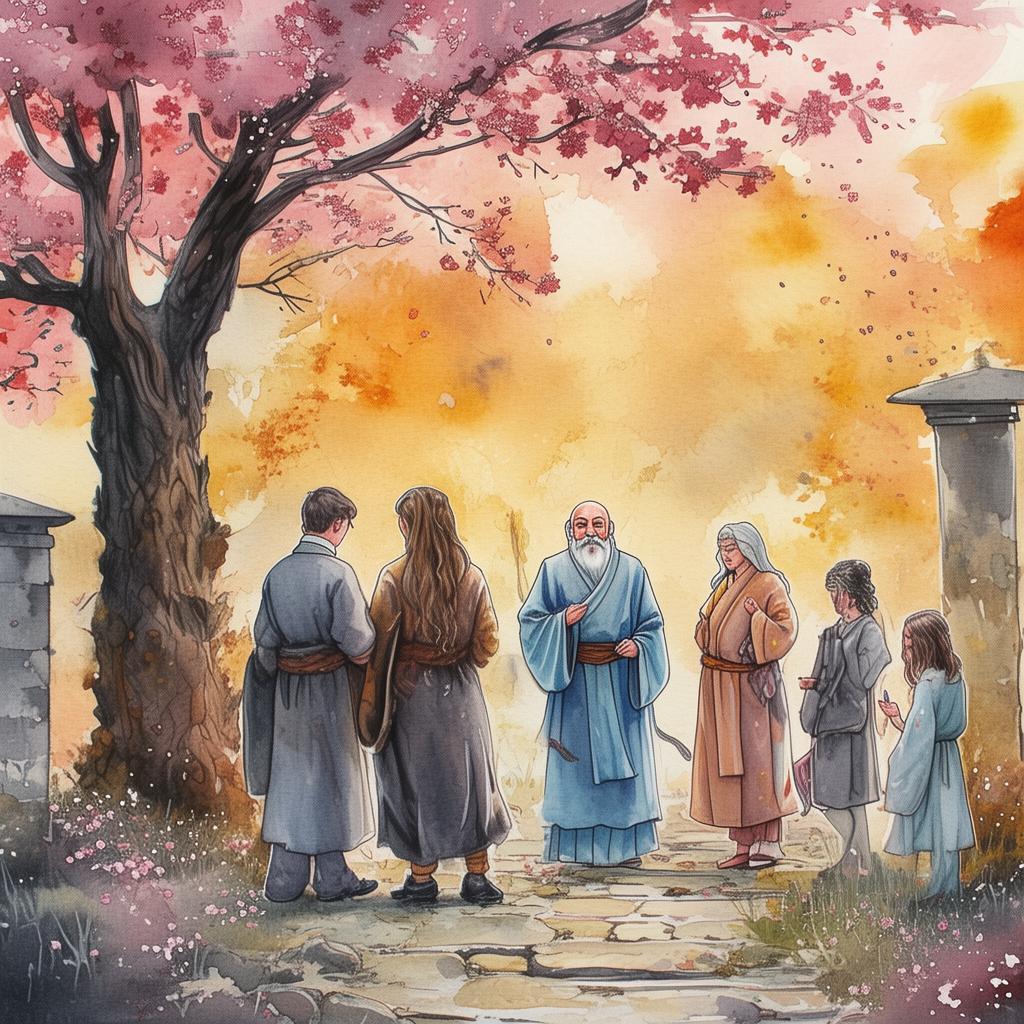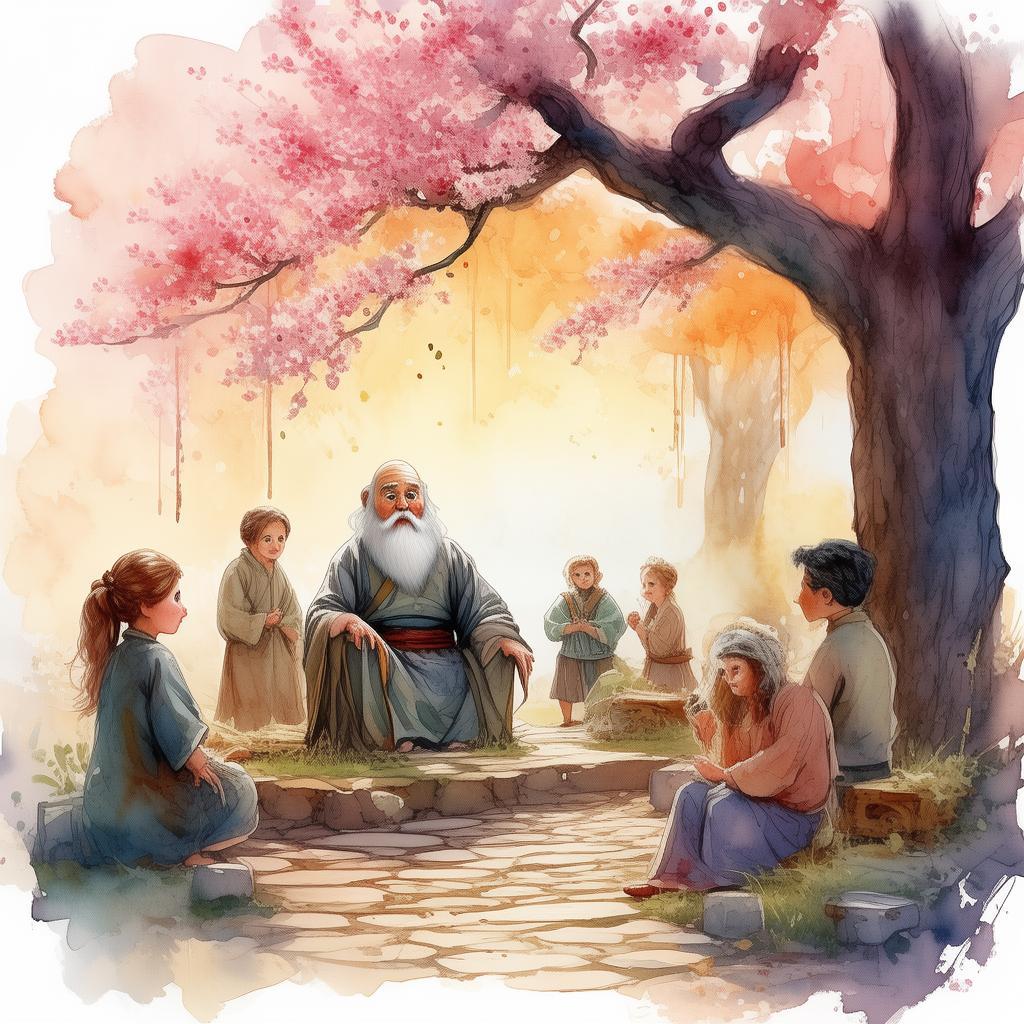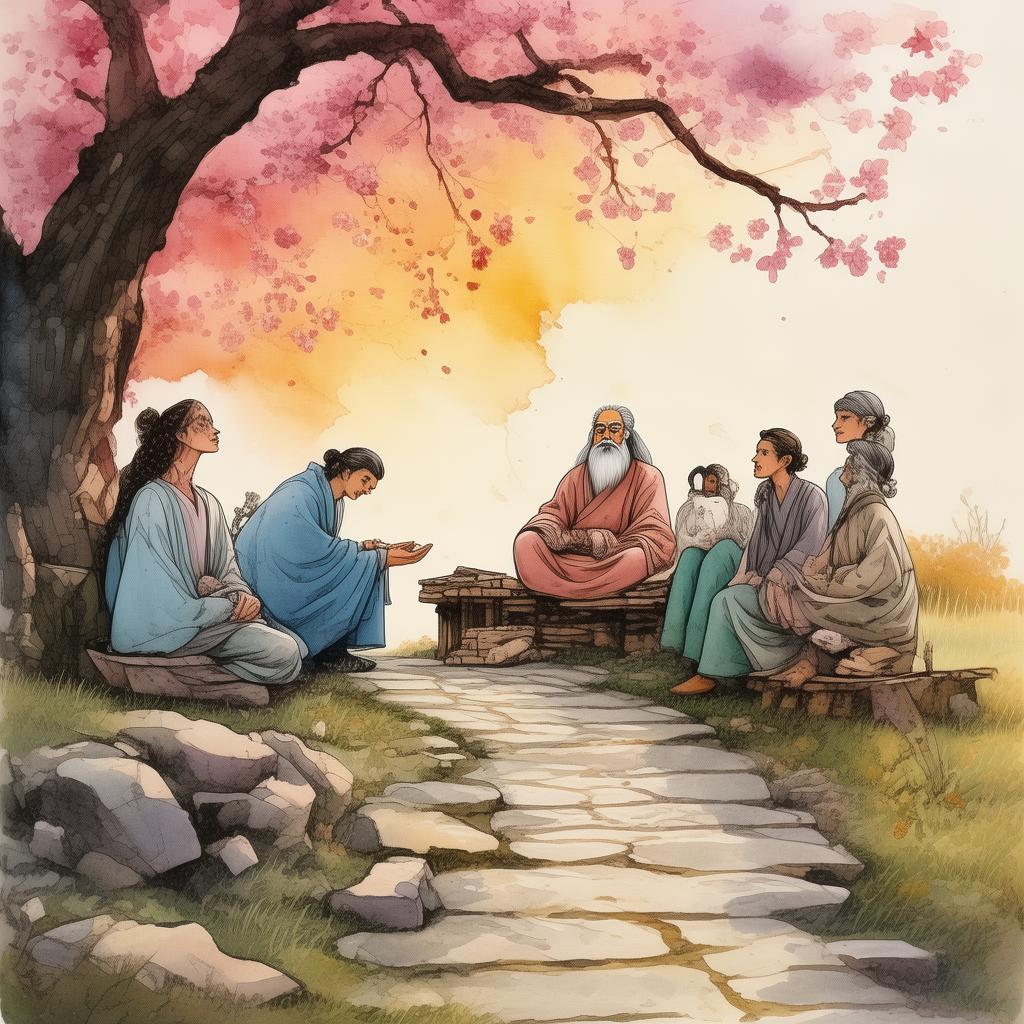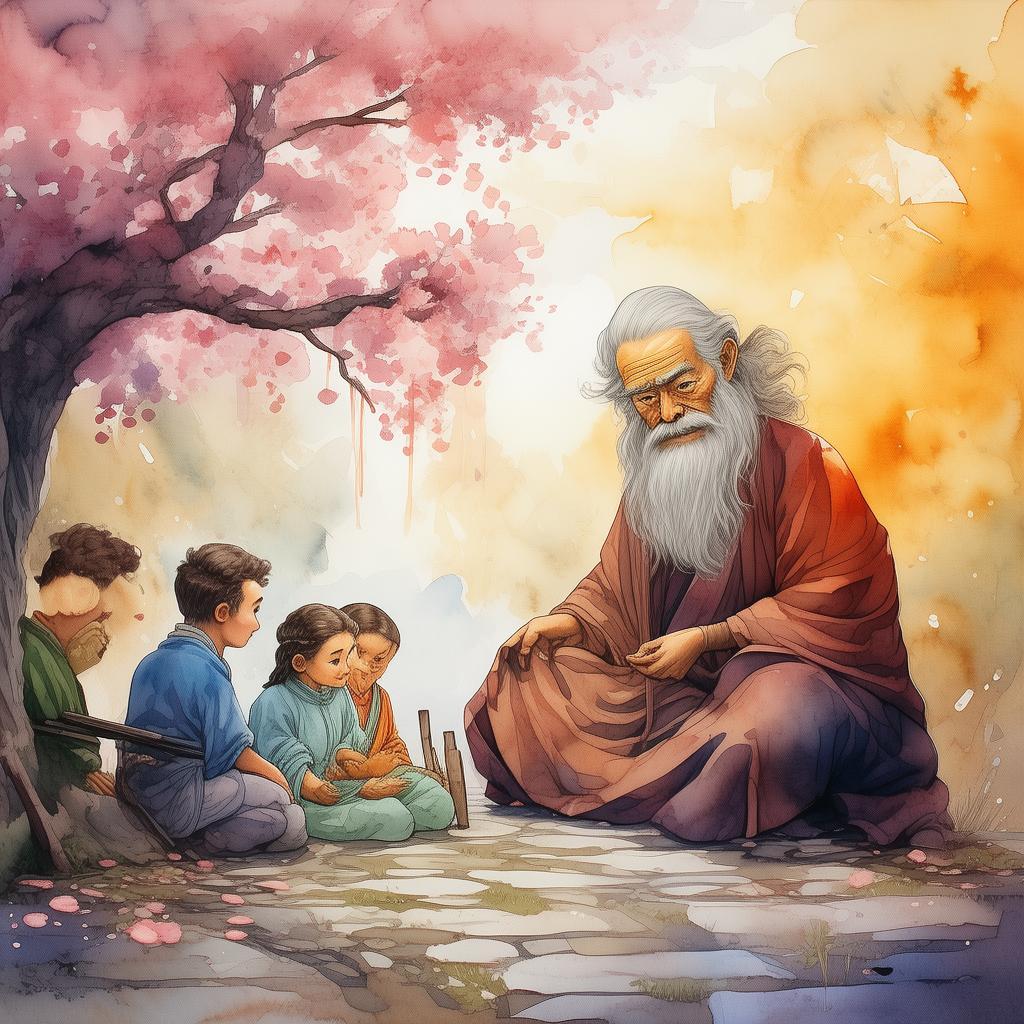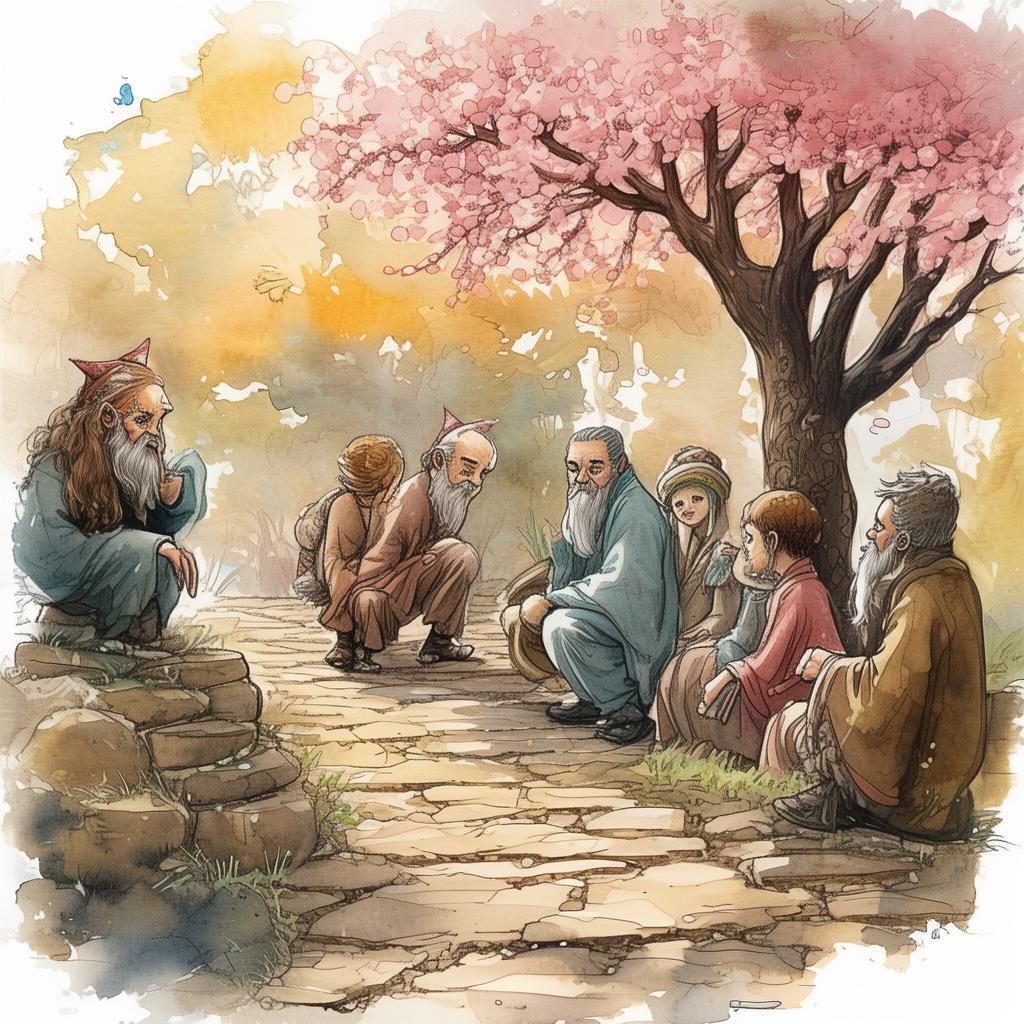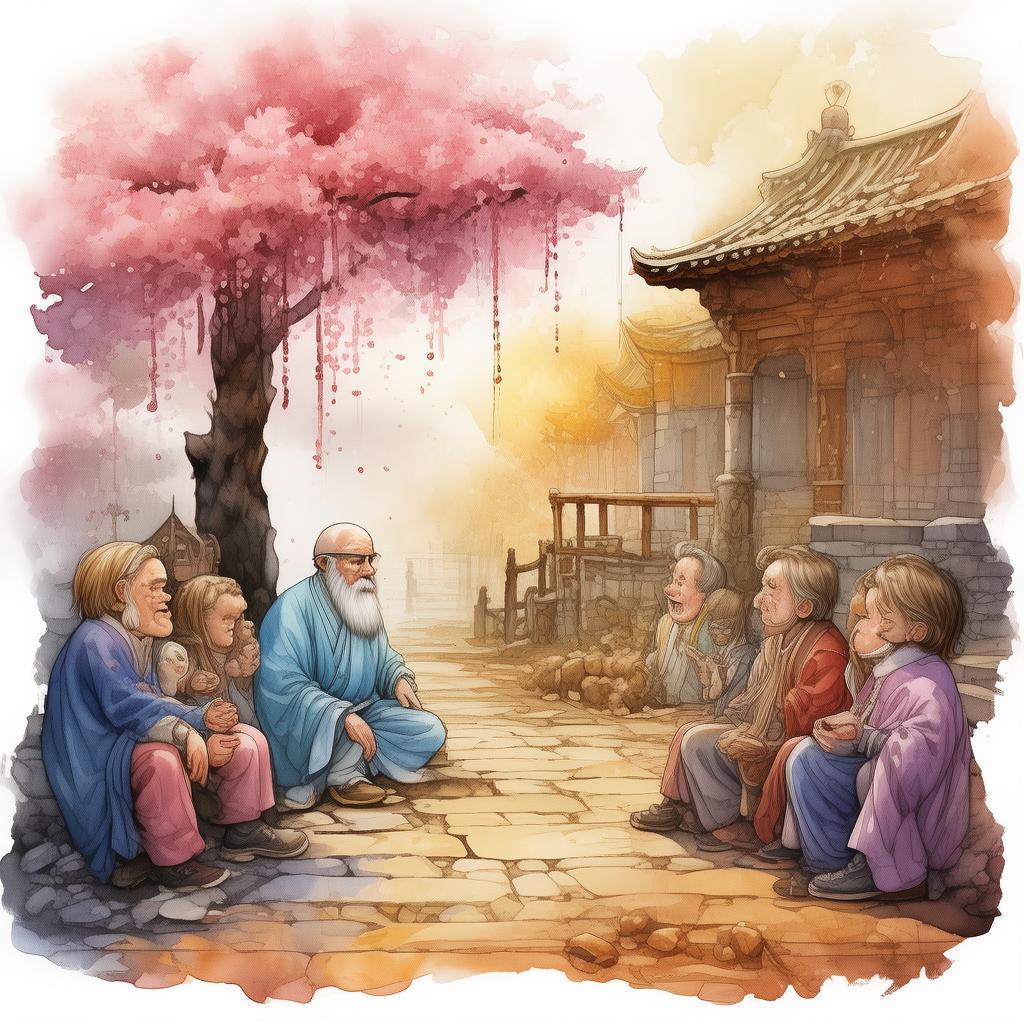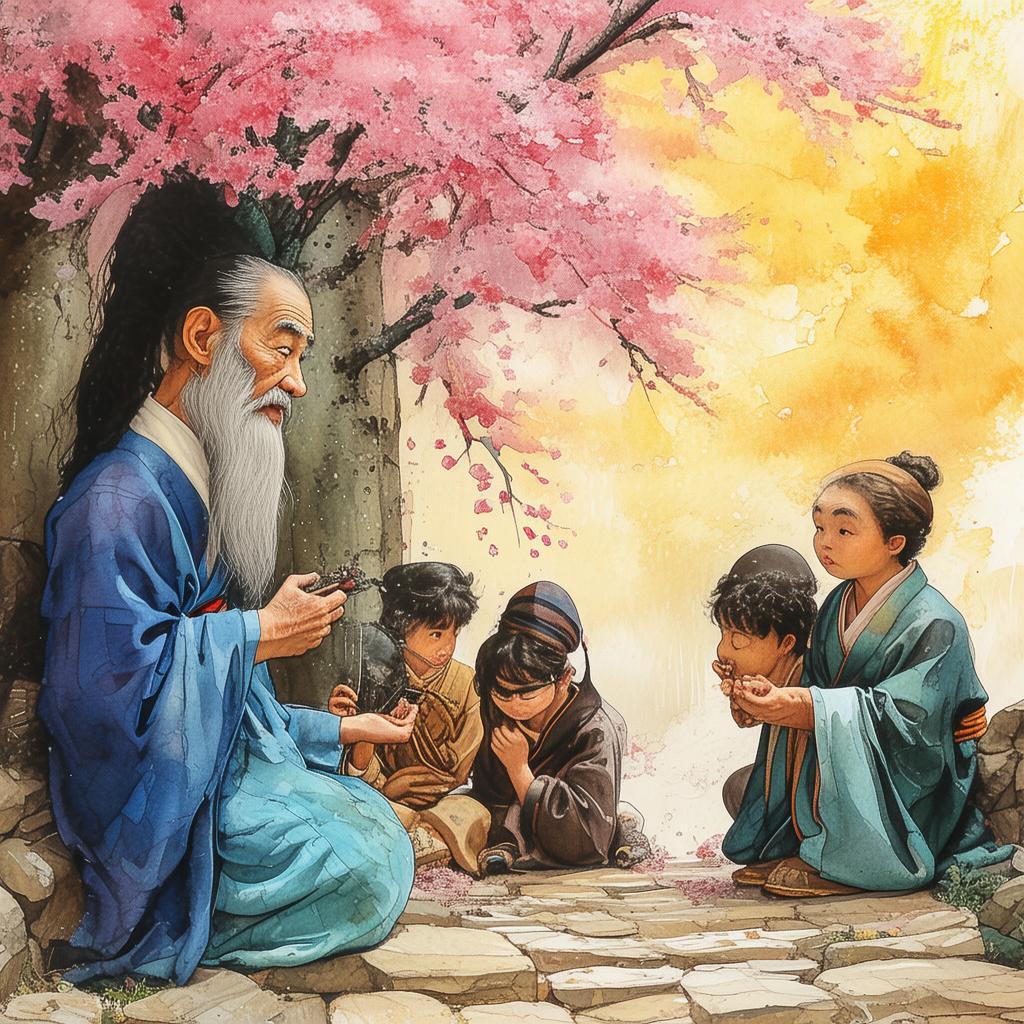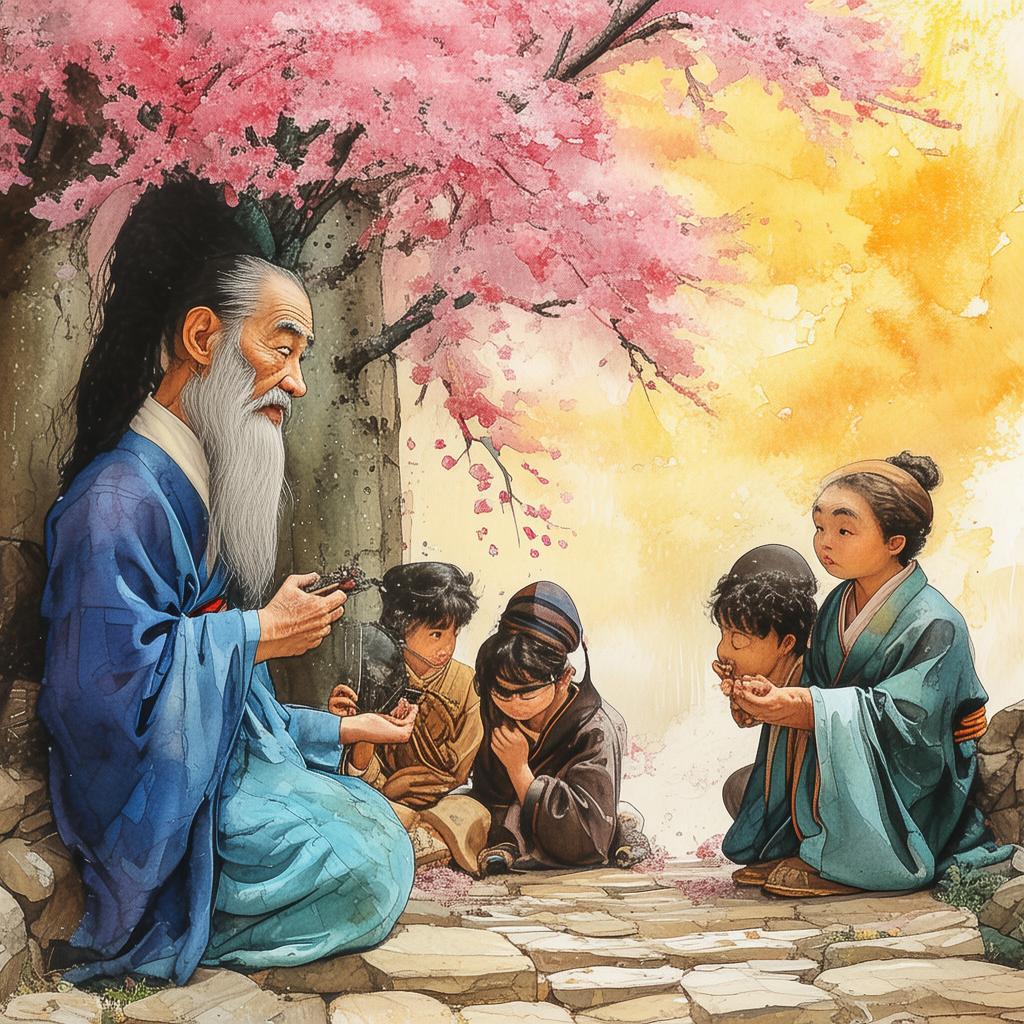The Melody of Despair: The Unfolding of the Yellow River's Dance
In the bustling city of Chang'an, during the Zhou Dynasty, there lived a musician named Qing, whose fingers danced with the same grace as the Yellow River's waves. His mastery of the guqin, a traditional Chinese zither, was unparalleled, and his music could move the hearts of all who heard it. Qing was not only a skilled musician but also a loyal servant to the emperor, whose court was the epicenter of musical innovation and cultural expression.
The Yellow River, known as the cradle of Chinese civilization, had always been a source of inspiration for artists and musicians alike. Its mighty current and ancient melodies were the heartbeat of the land, and Qing was determined to capture this essence in his music. He spent countless nights by the river, listening to its whispers and dreaming of a composition that would reflect the river's spirit.
One evening, as Qing sat by the river's edge, the moonlight cast a silver glow over the water. He felt an overwhelming urge to compose a piece that would embody the river's dance. With each pluck of the guqin strings, he felt the river's soul flowing through him. The music was born from the very essence of the Yellow River itself, a melody so powerful that it seemed to move the very earth beneath his feet.
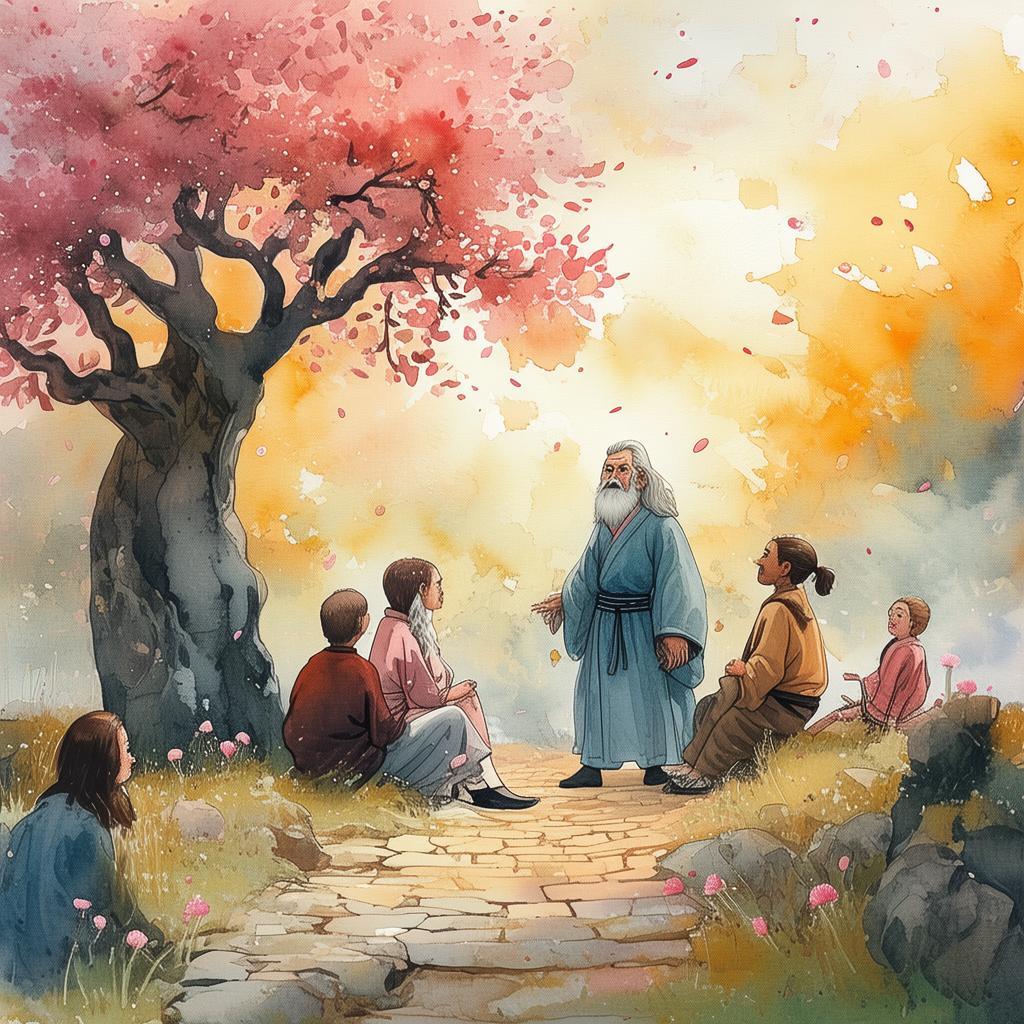
As the days passed, Qing's composition took shape. He named it "The Yellow River's Dance," a title that spoke of its connection to the great river. The music was a blend of traditional Zhou Dynasty tunes with new, more modern elements, creating a fusion that was both traditional and revolutionary. It was a testament to Qing's love for his culture and his desire to preserve it for future generations.
Word of Qing's new composition spread like wildfire through the court. The emperor, intrigued by the music's unique blend of the old and the new, summoned Qing to perform at the imperial court. The night of the performance was a grand affair, with the entire court gathered to witness the birth of a new piece of Chinese musical history.
As Qing played, the music seemed to come alive, each note a thread in the tapestry of the Yellow River's dance. The emperor, tears in his eyes, was moved by the piece's profound beauty. It was as if the river itself had taken a form and was performing for them, its spirit woven into the very strings of the guqin.
But joy was short-lived. The next morning, Qing was summoned by the emperor, who informed him of a royal decree. The emperor, influenced by a faction within the court that sought to suppress artistic innovation, had decided that "The Yellow River's Dance" was too radical and threatening to the status quo. He ordered Qing to destroy his composition and never play it again.
Pain and betrayal washed over Qing as he stood before the emperor. He knew that the music was not only his life's work but also a piece of the cultural heritage that defined his people. Refusing to comply, Qing declared his loyalty to his music and his people, vowing to protect "The Yellow River's Dance" at any cost.
The emperor, in a fit of anger, had Qing imprisoned. The musician was forced to endure the cold, dark cells, his spirit broken but his resolve unshaken. He continued to play the guqin, his fingers moving through the air, the music flowing from his soul. Even in his captivity, Qing's music could be heard, a beacon of hope and defiance.
As the days turned into weeks, Qing's condition worsened. The music within him was his lifeblood, and without it, he felt like a ghost trapped in a living body. The emperor, unable to bear the sound of Qing's music any longer, ordered the musician's execution.
On the day of his death, Qing stood before the executioner, his guqin in hand. With his last breath, he played "The Yellow River's Dance," a final tribute to his love for his culture and his people. The music was a testament to the indomitable spirit of the Yellow River and the eternal dance of life and death.
The emperor, moved by the beauty of the music, ordered a halt to the execution. He realized the error of his ways and allowed Qing's body to be buried with honor. The music, however, continued to live on, a symbol of the enduring power of the Yellow River and the unyielding spirit of its people.
The tale of Qing and "The Yellow River's Dance" became a legend, a story of love, loyalty, and the unyielding power of cultural heritage. It served as a reminder to the people of the Zhou Dynasty that the true essence of their culture lay not in the suppression of artistic expression but in the celebration of it. And so, the Yellow River's dance continued, a timeless melody that would forever echo through the ages.
✨ Original Statement ✨
All articles published on this website (including but not limited to text, images, videos, and other content) are original or authorized for reposting and are protected by relevant laws. Without the explicit written permission of this website, no individual or organization may copy, modify, repost, or use the content for commercial purposes.
If you need to quote or cooperate, please contact this site for authorization. We reserve the right to pursue legal responsibility for any unauthorized use.
Hereby declared.
